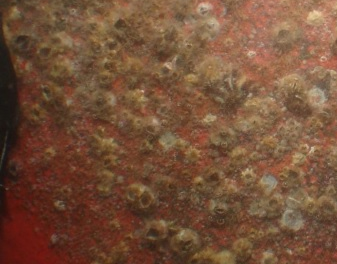
Surfaces that come into regular contact with water and other liquids are affected over time by a process known as fouling, which causes limescale in washing machines and kettles. Stubborn mineral build-ups are also found on much larger surfaces, such as ships – and it is a costly problem.
Fouling carries an approximate cost of 0.25% of annual GDP for industrialised countries. It refers to the accumulation of small particles which become trapped and stick together either by adhesion or crystallisation.
Limescale is a common type of fouling which can occur in washing machines and other pipes where water flows. It causes blockages and can affect performance.
There are different types of fouling, such as precipitation fouling, which is common in the production of pharmaceuticals; and biofouling, which affects marine transportation. Biofouling creates extra weight on ships and added drag, which increases the fuel intake needed.
My nanoengineering project seeks to determine a method in which fouling can be prevented. I will research an innovative technology which uses reactive surfaces as coatings to break down these layers before they become disruptive.
A reactive surface can be altered by a stimulus, such as applying a force or inducing it with an electric current. This changes the shape of the surface, which disrupts the fouling layer and breaks up deposits.
An alteration to the surface structure before large, scaly deposits have formed could save billions in maintenance and repairs and reduce carbon emissions.